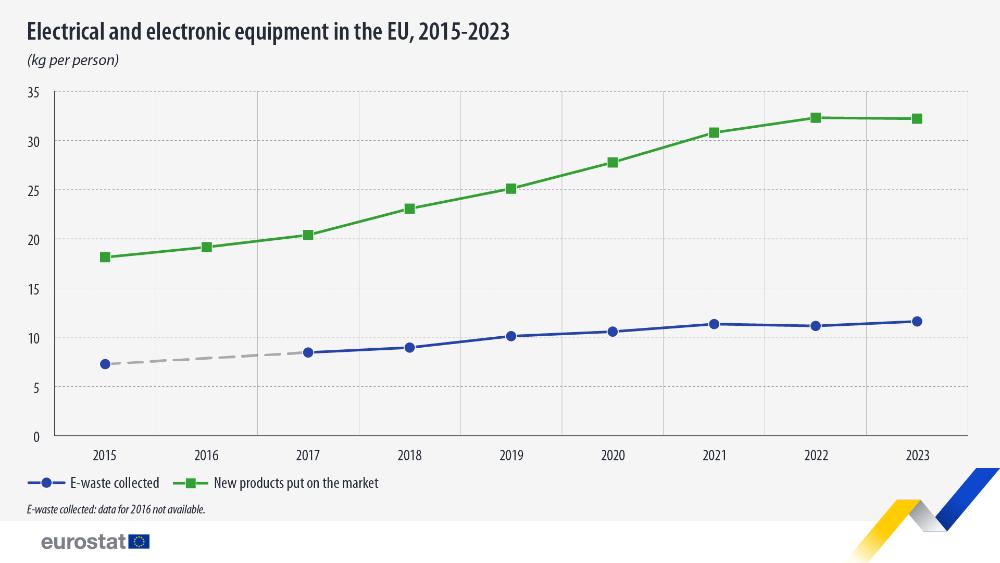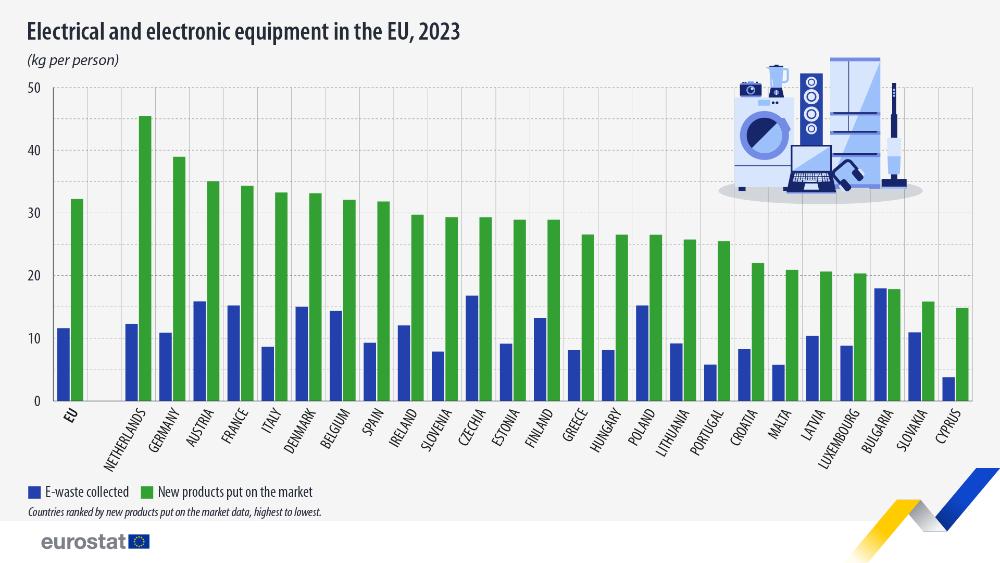In 2023, 11.6 kg of electrical and electronic equipment waste (WEEE or e-waste), for example, household appliances, smartphones and computers, was officially collected per inhabitant in the EU compared with the 32.2 kg of new electrical and electronic equipment (EEE) per person put on the market. This 20.6 kg difference per person highlights an increase in the stock of devices, either because they are still in use, awaiting disposal, being hoarded at home or lost to informal, unmonitored waste treatment.
Between 2015 and 2023, the EEE placed on the market in the EU grew by 78%, from 18.1 kg per person in 2015 to 32.2 kg in 2023.
The Netherlands recorded the highest amount of EEE placed on the market, with 45.4 kg per person, followed by Germany (38.9 kg) and Austria (35.1 kg). At the other end, in Cyprus, only 14.8 kg of electronic equipment per person was put on the market. Slovakia (15.8 kg) and Bulgaria (17.9 kg) followed with the lowest values.
Source dataset: env_waseleeos
Between 2015 and 2023, e-waste collected grew by 60% from 7.3 kg to 11.6 kg, showing a slower growth than the EEE placed on the market.
Among the EU countries, Bulgaria (17.9 kg per person), Czechia (16.8 kg) and Austria (15.9 kg) registered the highest values of e-waste collected per person, while the lowest amounts collected were in Cyprus (3.8 kg per person), Malta and Portugal (5.8 kg per person each).
Source dataset: env_waseleeos
Bulgaria is the only EU country in which electrical and electronic waste collection equals the products placed on the market, with 17.9 kg per person in each category. In contrast, in the Netherlands, the weight of electronic products placed on the market is almost 4 times higher than that collected as waste, 45.4 kg vs 12.3 kg.



